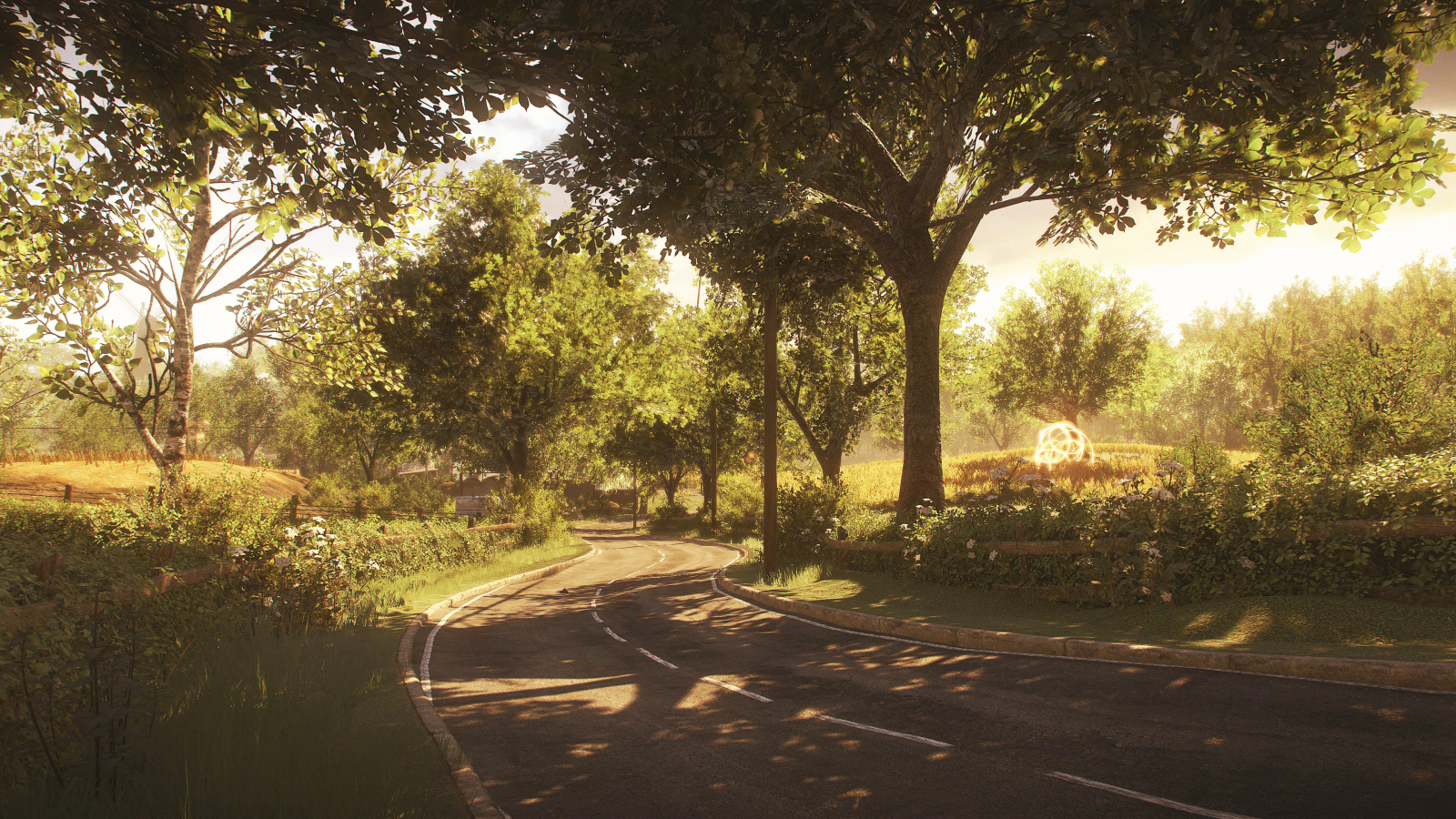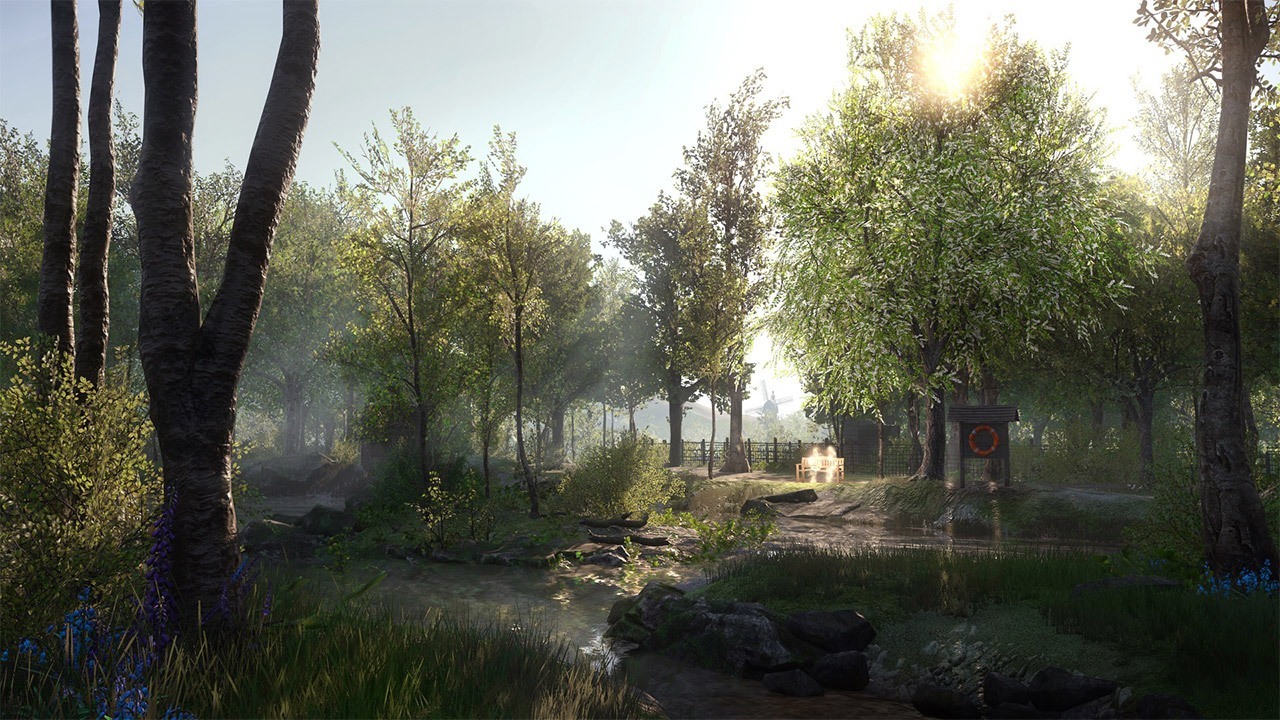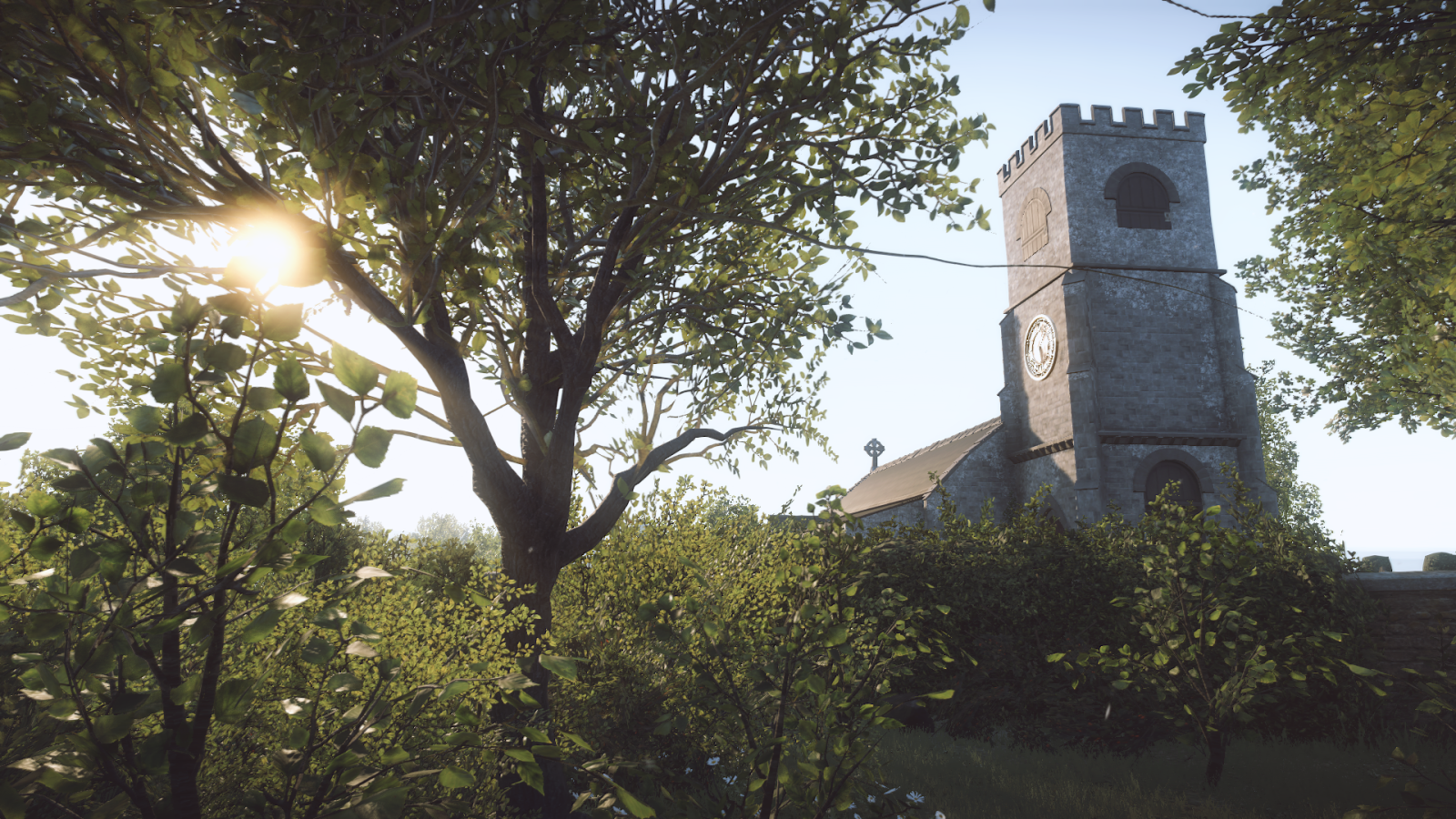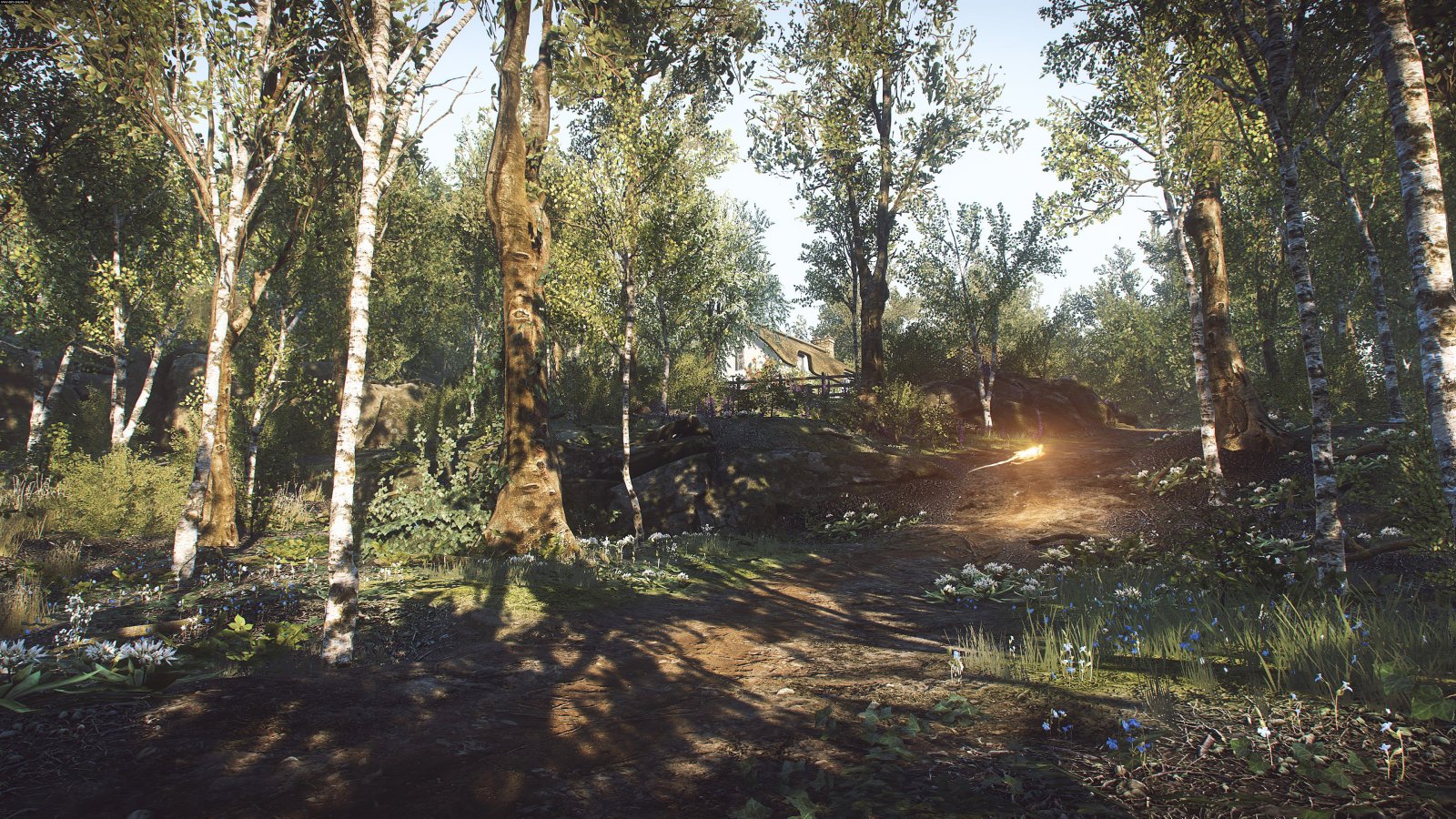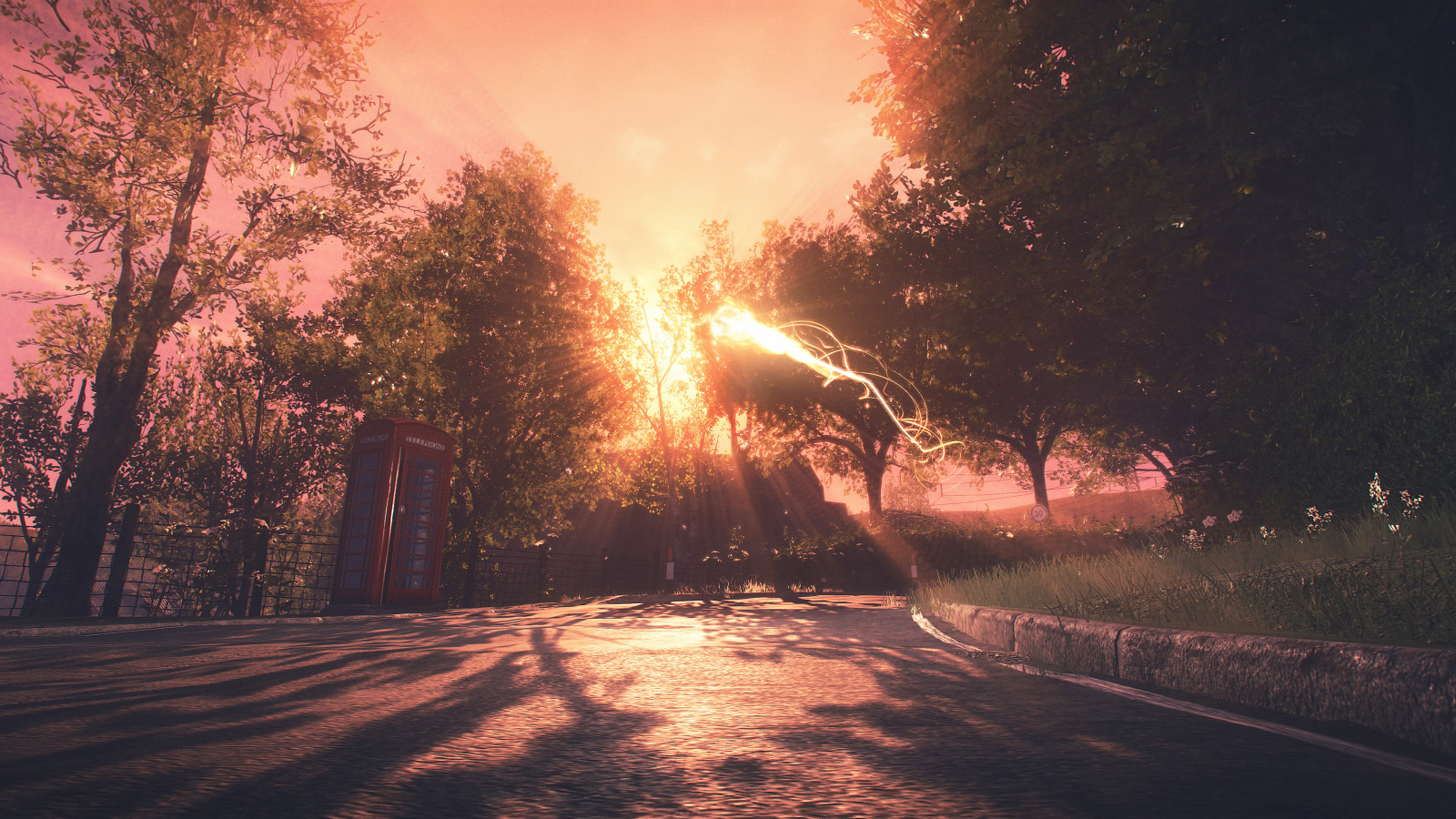
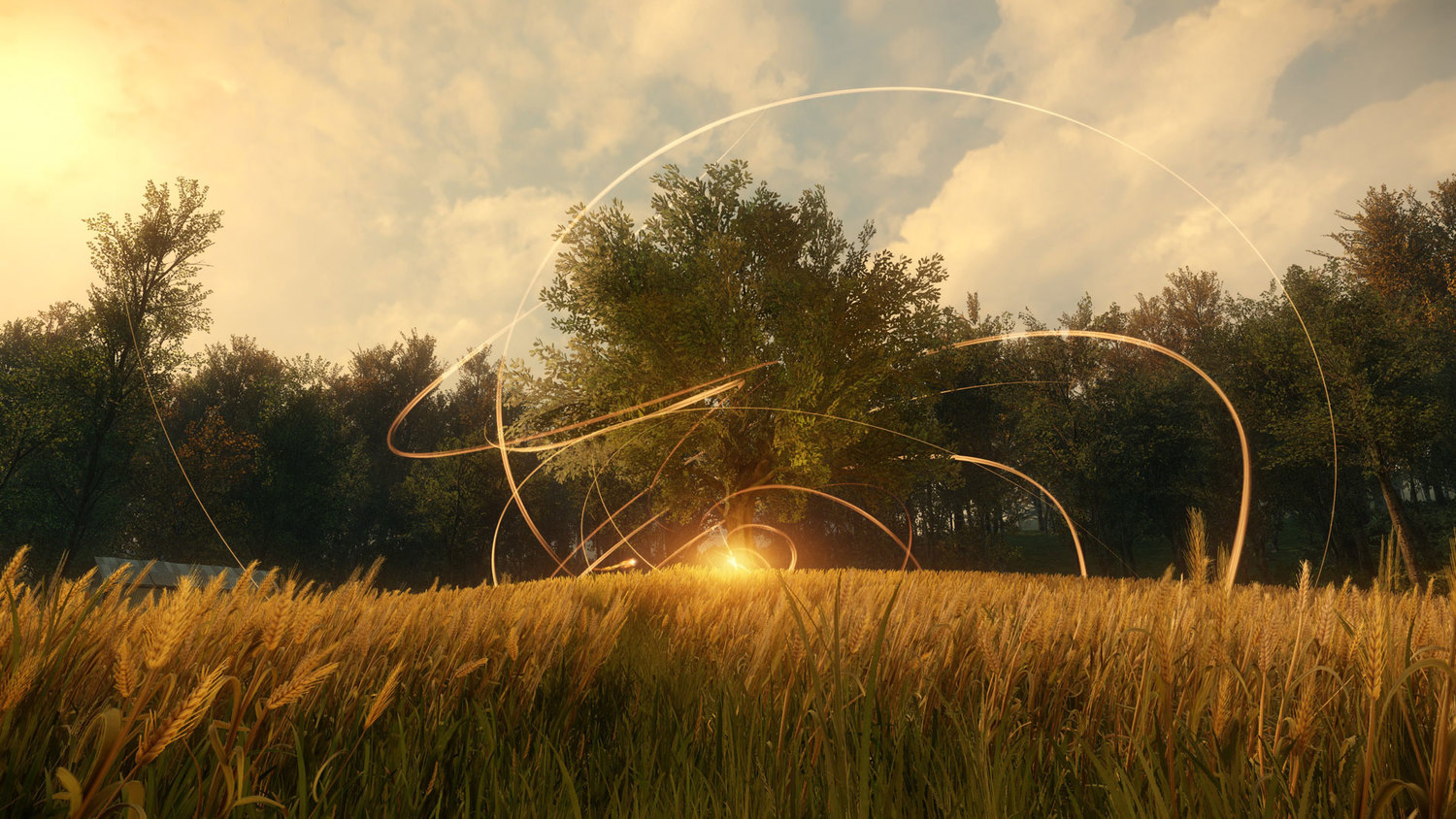
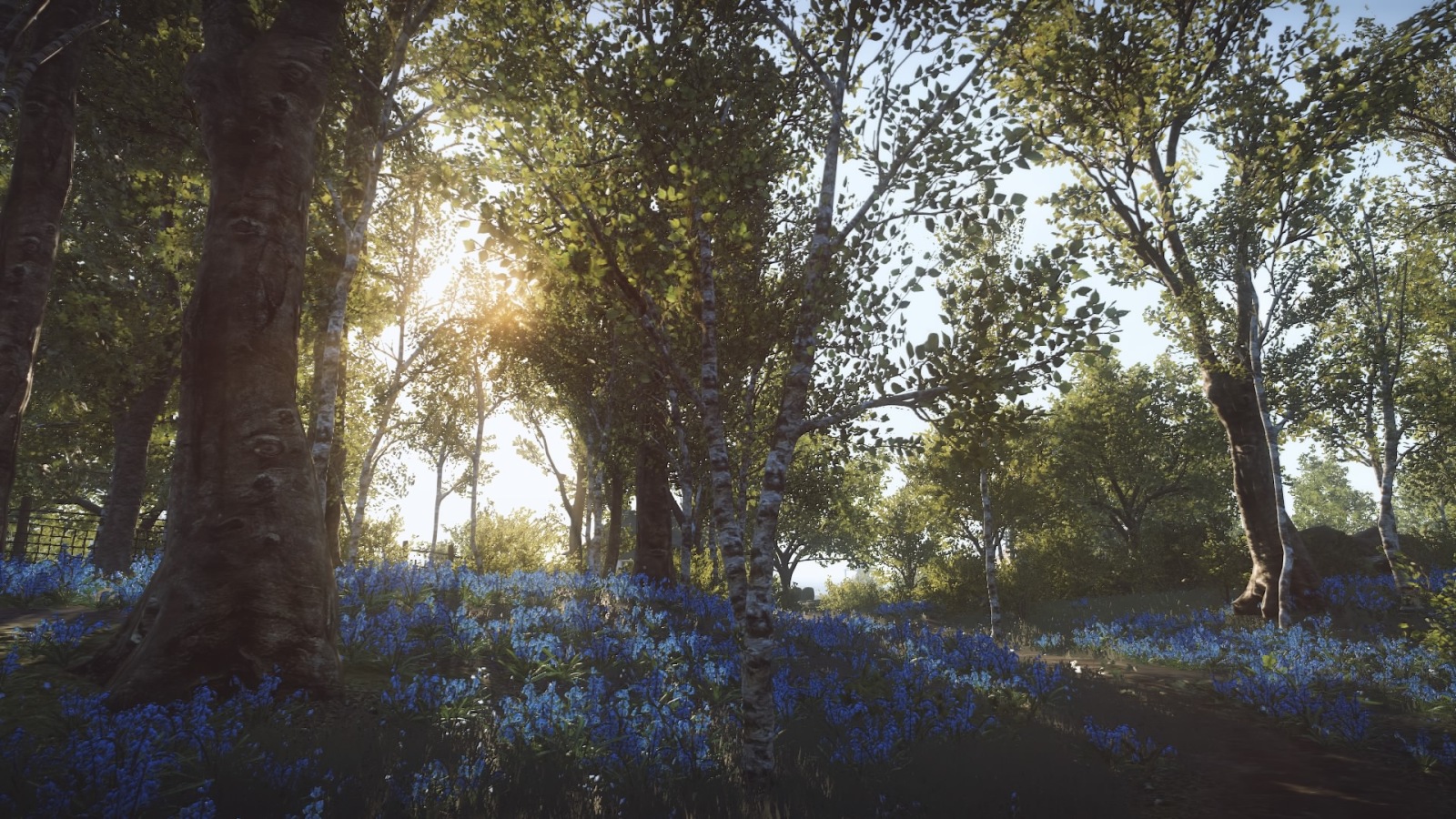
Everybody’s Gone to the Rapture is a first-person, story-based art game developed by The Chinese Room, who also did my beloved favorites Dear Esther and Amnesia: A Machine for Pigs. Considered a “spiritual successor” to Dear Esther, it takes place in a small town in Shropshire, England in the 1980s. As the unknown protagonist, you follow a mysterious, otherworldly, seemingly sentient orb of light, which guides you through the village and surrounding countryside to piece together what happened to the residents, who have all vanished. At specific points, the orb produces/triggers reenactments of conversations and encounters between villagers which took place there. In addition to these resurrected conversations, you also access telephones and radios throughout the village to hear recordings of dialogue.
The two main characters are Kate and her husband Stephen, scientists at the observatory. After discovering a strange “pattern” of lights in the night sky, they come to believe that it is a kind of extraterrestrial, conscious entity, which can “infect” other life forms. When people come into contact with it, they suffer from mysterious nosebleeds and hemorrhaging, before evanescing without a trace, or leaving behind only ashes. The town is quarantined with the explanation of an influenza outbreak, which the inhabitants doubt as one by one they are infected by the “Pattern” and disappear.
Visually, this game is unassumingly beautiful. The environment is quietly, gently, yet crisply lush and wonderfully detailed. The style is neither quite entirely realistic nor glossy. The English countryside setting is very idyllic and abundant in subdued natural splendor. What’s interesting, and perhaps a little frustrating, is that all you ever “see” is the “post-apocalyptic” aftermath, the deserted village; you only learn about the preceding events through the conversations that are reenacted. You are unable to see what the villagers experienced, or what Kate and Stephen saw in the sky. There are no “flashbacks” in the visual sense, only verbal echoes. The voice acting is great – nuanced and naturalistic – especially the voice for Kate. Another lovely element is the soundtrack of beautiful choir music, which underscores the mystical and transcendental themes.
Rapture is enigmatic and somewhat opaque, yet at the same time very human. I see it as a vast, ethereal mystery wrapped around a human heart. The core of it is a beautiful record witnessing the responses of a group of people affected by an explicable preternatural disaster. For me it wasn’t immediately absorbing, but as I got further into the game I became more and more fascinated by and invested in the story. One of my favorite things was finding out about the personalities of the villagers, the connections between them, and realizing, along with their flaws, their goodness, which is often touching, how they coped with the confusion and loss, and how they struggled to do what they thought was right or to figure out what that was. My favorite moment is probably the achingly bittersweet scene where Rachel Baker is singing a lullaby to a baby she’s holding in her arms while knowing that the end is near for them. Rapture is pervaded with an indelible sadness and poignancy. At a different level, it’s also about the ways that people react differently to the unknown, represented by Kate’s rapt, fascinated openness on one hand and Stephen’s pragmatic fear on the other.
One thing I didn’t like was the way that the light formed “ribbons” outlining the forms of the characters speaking and moving during the reenactments, which I thought was too literal and obvious. It could have been represented by a more subtle, flowing, vaporous playing of the light where the villagers had been.
By the end, not much is revealed about the nature of the Pattern, only a very general sense of what it is and a faint hint at its psychology and motives. While this isn’t necessarily a bad thing, I would have liked to find out more about it; but perhaps it’s better that it’s so unknown, and is left up to our imaginations, to conceive what would satisfy us. “Everybody’s Gone to the Rapture” is such a striking title, which offers us a specific viewpoint on the occurrences at the same time as the story ultimately denies us finality and remains open to interpretation. It almost evokes the explanation of a child, who, when asked where all the people had disappeared to, would respond, “Oh, everybody’s gone to the Rapture.” In spite of this, Rapture doesn’t suggest a theistic outlook; however, it does very much have spiritual themes and overtones, dealing with possibilities of existence beyond our earthly lives, of integration of the self with a greater consciousness, and of communication outside the normal boundaries of space and time.
